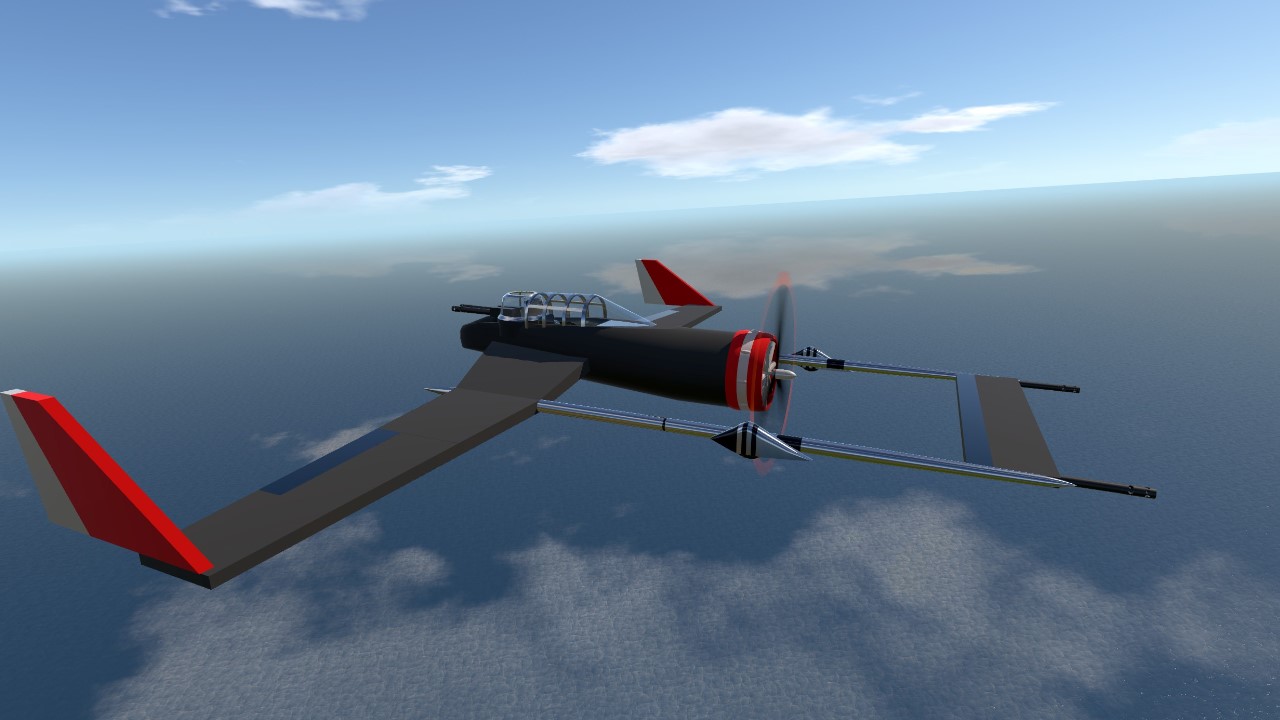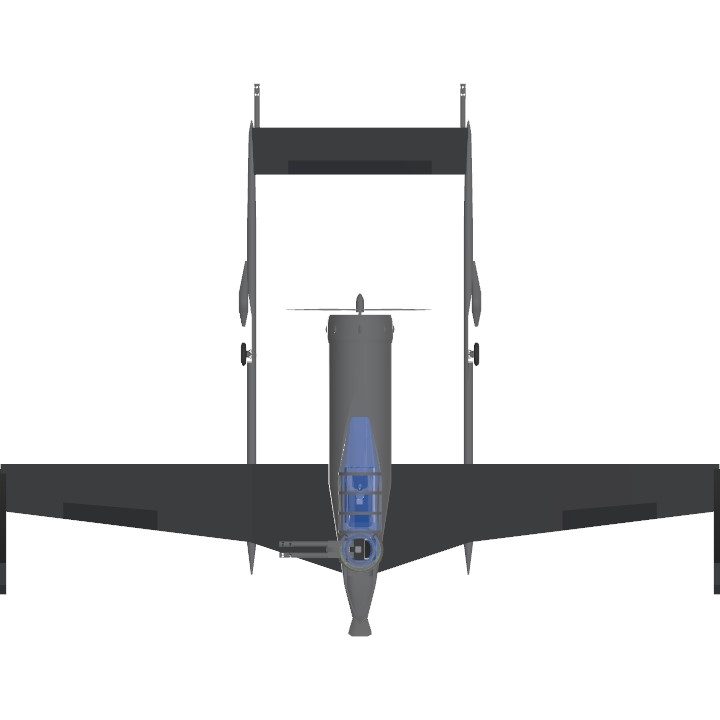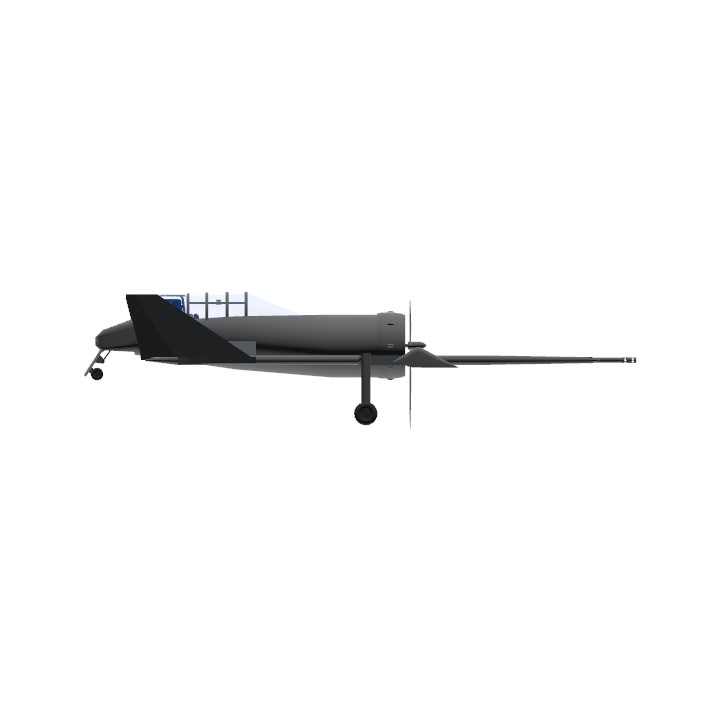Two seat, turret fighter.
Maximum speed = 85 MPH (approximate)
Stall speed = 270 MPH (approximate)
AG1 - Arm forward machine guns
AG2 - Arm rear machine guns
VTOL - Turret traverse
Trim - Turret elevation
Alternate History
Developed in 1935 by a consortium of Canadian manufacturing concerns, who were looking to build experience developing modern aircraft. The concept of turreted fighter aircraft was being explored at the time and the AHS-14 was designed for maximum rearward field of fire.
Three prototypes were constructed, one of which was sent to Britain for evaluation there. While the aircraft flew well, testing under operational conditions cast scrutiny on the efficacy of turret fighters. The airplane would likely not have been produced except for the timely arrival of the war. The need for domestic fighter and patrol aircrafts meant that Critical Air received a production contract for 138 Mk. I fighters. These served in Canada throughout World War 2 but never saw action.
The developers continually improved the AHS-14. The presence of an engine mounted relatively close to the center of gravity made it easier to equip the aircraft with more powerful engines, and the latest large American radial engines were soon fitted.
The AHS-14 Helios saw expanded service in the British Commonwealth Air Training Plan with a Mk. II version that was used as a gunnery trainer. A total of 443 aircraft were produced. These were used to train air gunners for the allied bombing campaign.
In 1940, a final version of the Helios was developed. The Royal Air Force, anticipating the German night bombing campaign to come, rushed to put suitable night fighting aircraft into service. With good performance and space for 2 crew, the Helios was earmarked for conversion. The weight and the bulkiness of the air intercept radar set meant that the turret had to be removed. In its stead, the Helios Mk. III was equipped with obliquely mounted cannons firing upwards at 45 degrees.
This arrangement had been used with Zeppelin hunting aircraft in World War I, and later in World War 2 was used in German interceptors where it was called "Schraege Musik".
The Helios Mk. III was highly successful in the night fighter role, and is credited with blunting the German Blitz of late 1940 and early 1941. The RAF brass were particularly pleased with having a single engine night fighter that could do the work of a twin. This freed up many engines for use with the fighters and bombers that were being built to strike back at Germany. A total of 314 Helios Mk. III night fighters were built, and were used to equip the Home Defense Squadrons of Britain.
Specifications
General Characteristics
- Predecessor 1930s challenge (ClOSED)
- Created On Windows
- Wingspan 37.6ft (11.5m)
- Length 28.9ft (8.8m)
- Height 7.2ft (2.2m)
- Empty Weight 3,927lbs (1,781kg)
- Loaded Weight 4,537lbs (2,058kg)
Performance
- Horse Power/Weight Ratio 0.215
- Wing Loading 24.2lbs/ft2 (118.0kg/m2)
- Wing Area 187.7ft2 (17.4m2)
- Drag Points 2092
Parts
- Number of Parts 187
- Control Surfaces 6
- Performance Cost 826





Rating:
Looks: 4/5. Unique, I like the layout, and is a cool concept
Performance: 2/5. Fast enough and banks well, just stalls out and becomes uncontrollable, so in had to give you a bad rating
Realism: 3/5. Cockpit and turret are detailed, but other than that, other parts aren’t as detailed. Flys a little weirdly, but I’ll give you an extra point for the detailed description.
Total score: 9/15